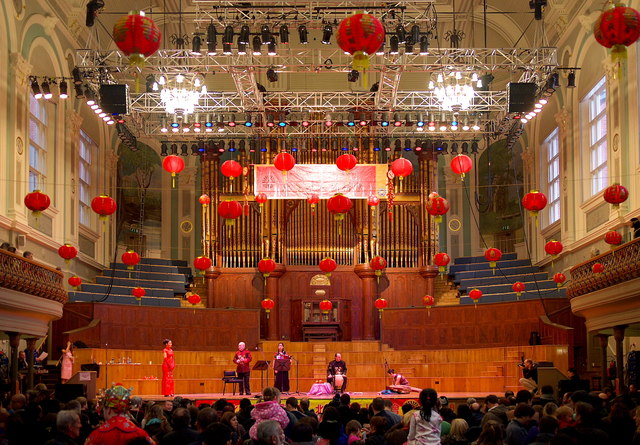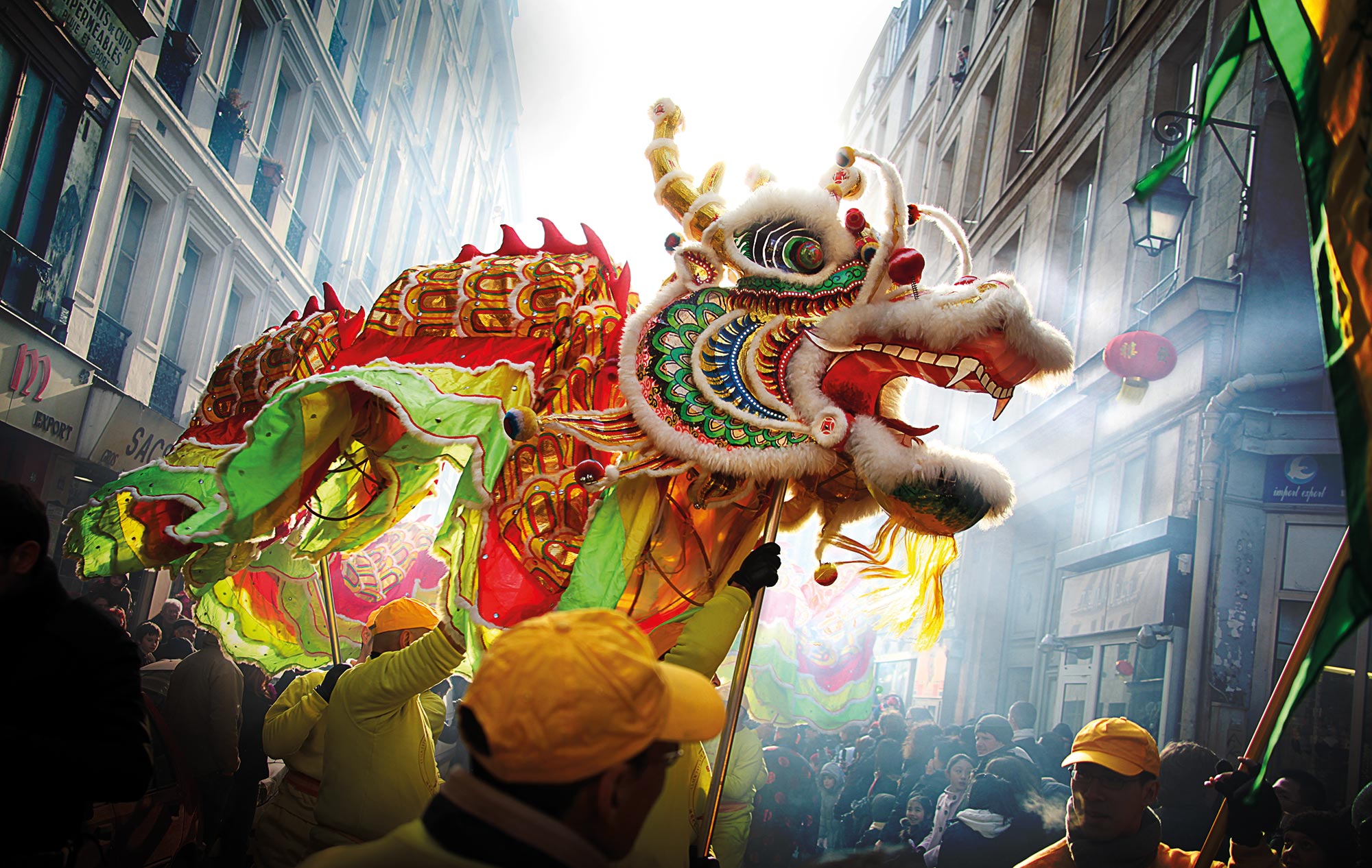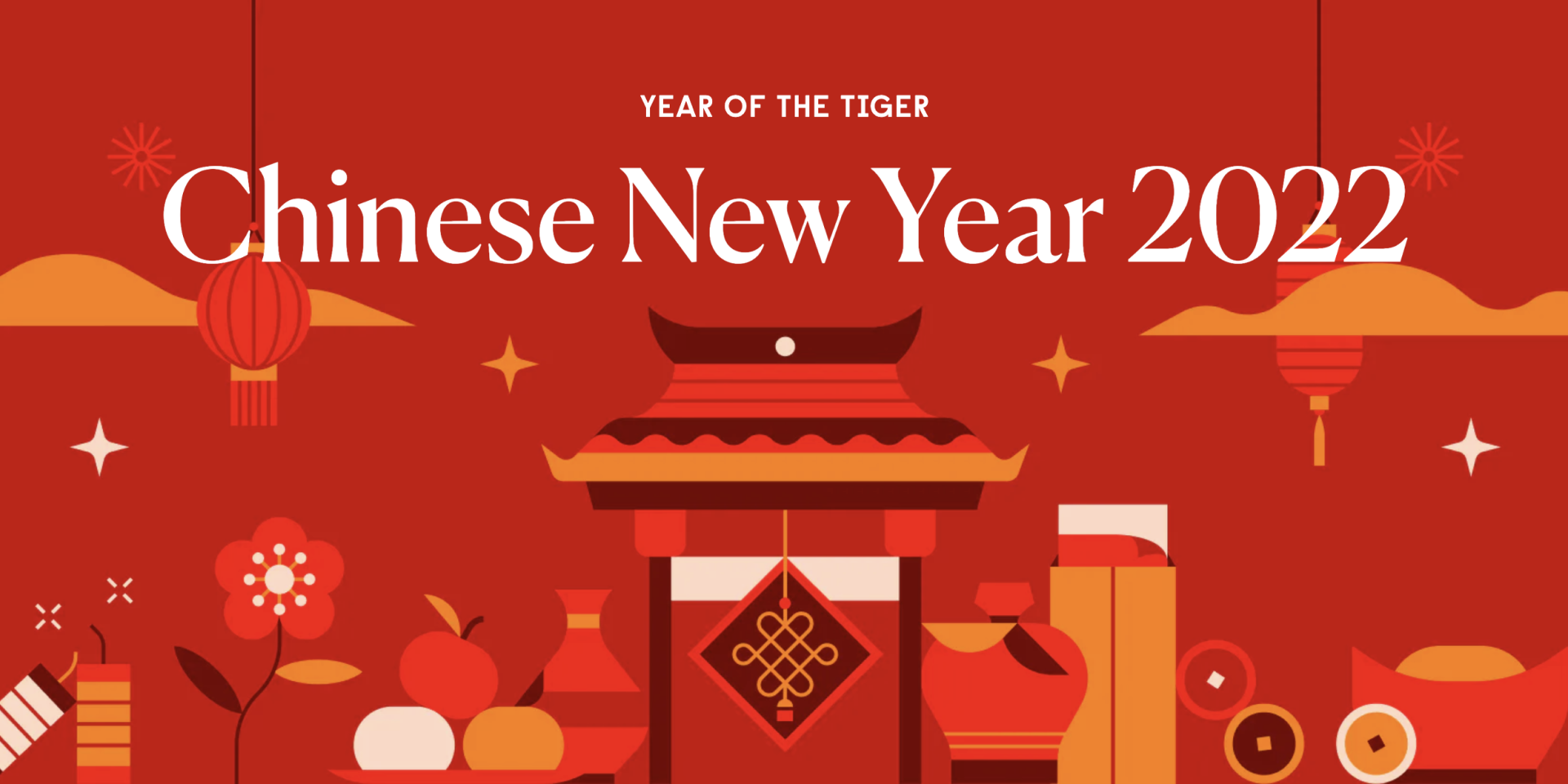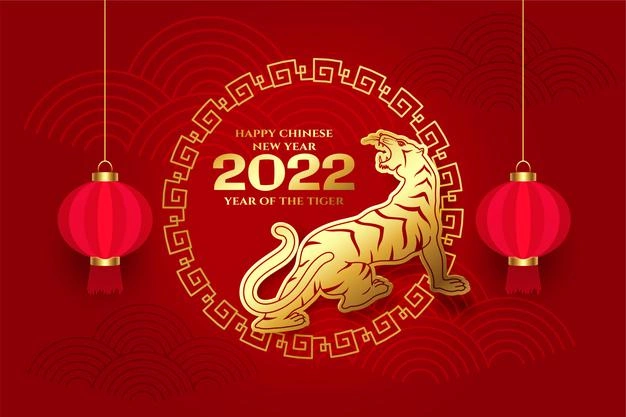Giant Start to Chines New Year
This year we were delighted to be contacted by the Stena Line Belfast Giants who wanted to celebrate Chinese New Year with us. The home game against the Cardiff Devils on Sunday 4 February 2024, was the perfect opportunity and saw players wear a specially designed kit to celebrate the occasion.
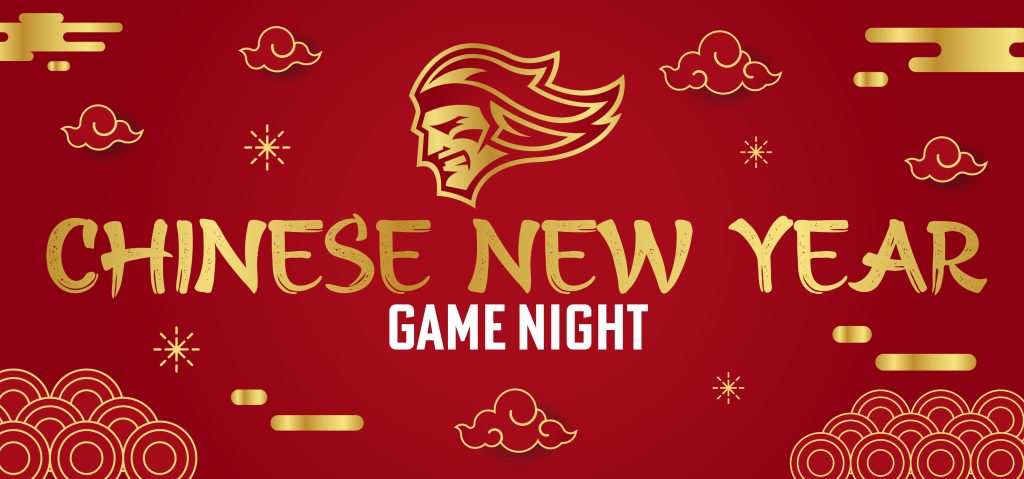
Their website promoted the event and explained to fans the background and significance of the Lunar New Year. The game and the publicity surrounding it was a real bonus to our events raising profile and awareness.

The Giants also explained the nature of the work Chinese Welfare Association is involved in and made the following generous pledge.
“In support of the organisation’s commitment across local communities in Northern Ireland, all profits from the game night Shirt Off The Back raffle on Sunday 4 February 2024 will be donated to the Chinese Welfare Association.”

That raffle raised a grand total of £5,384.17 from the themed Shirt Off the Back and a percentage of retail jersey sales. This total will be donated to our work and we will be using it to support young people and our various programmes with them.
We hope that this is the start of something truly ‘giant’ where we introduce our community to ice-hockey which interestingly is very popular in China. The Stena Line Belfast Giants’ community engagement is a valuable part of the work they do in our city and country and we pay tribute to their spirit of inclusivity and leadership.

Chinese Ice Hockey
Interestingly Belfast’s sister city Shenyang is a popular centre for ice-hockey in China. Ice skating has always been popular with Nanhu Park and Beiling Park both having lakes that are cleared for skating, in the winter. Some of Shenyang’s universities have ice rinks as well as four indoor skating rinks in the city. The "Shenyang Ice Eagles" hockey club consists of a mix of foreign and local players.they compete in tournaments with teams from other cities.
Kunlun Red Star is China’s first professional hockey club and was born in 2015. Based in Beijing, it plays in the Kontinental Hockey League (KHL), a professional ice hockey league with teams based in Belarus, Kazakhstan, Latvia, and Russia.

Kunlun Red Star also owns a professional women's ice hockey team, Shenzhen KRS Vanke Rays, based in Shenzhen. Established in 2017, KRS Vanke Rays played in the Canadian Women's Hockey League, with teams based in Canada and the United States.
From 2004 to 2017, several men's ice hockey teams based in China played in Asia League Ice Hockey, a professional league made up of teams from Japan, South Korea, and the Russian Far East.
In 2015, Andong Song became the first Chinese-national drafted by a National Hockey League (NHL) team, a men's professional league consisting of teams from Canada, and the United States. Song was drafted by the New York Islanders in the 6th round (172nd overall) in the 2015 NHL Entry Draft.
In 2019, Rudi Ying became the first Chinese-native to score a goal in the KHL. An impending domestic league has been proposed by the Chinese Ice Hockey Association. The league is assumed to consist of eight clubs; four being the Kunlun Red Star, Jilin City Investment, Beijing Shougang and Zhongshang Hokay.
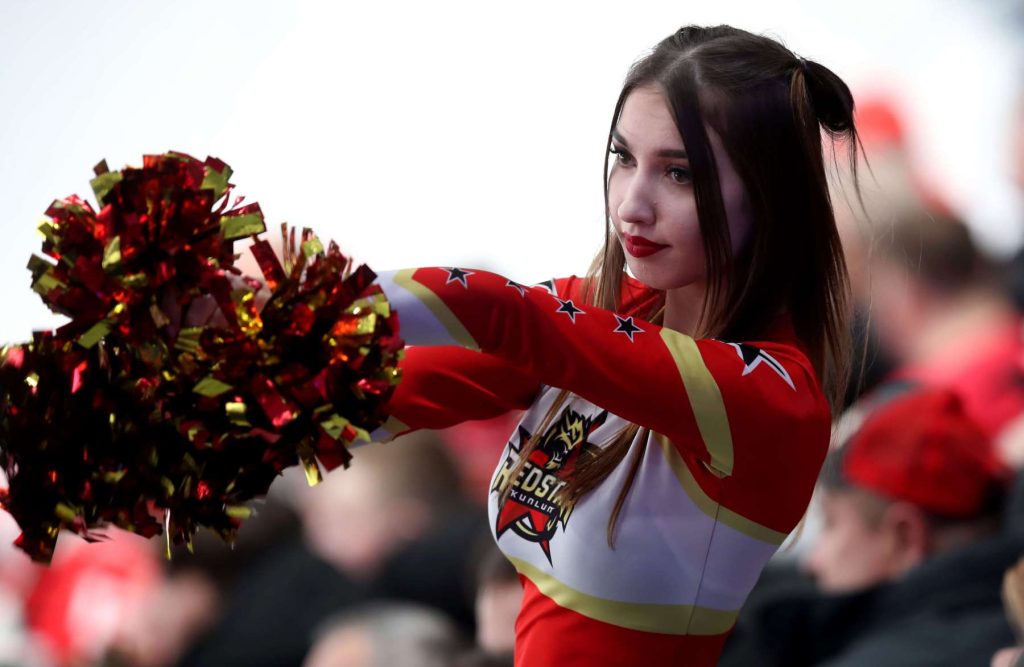
Just like the Belfast Giants Chinese teams are home to some great international talent who live and play their hockey in their country. They have stimulated interest locally in China and with the XXIV Winter Olympic Games hosted there China was proudly represented in the ultimate hockey tournament by both men’s and women’s teams.
The Women’s team achieved two victories – over Denmark and Japan, which was impressive since the Japanese team was significantly higher than the Chinese in the world rankings.
China is looking to expand the sport of hockey and attract teams from around the world to participate in tournaments like the “The Revitalization Cup”. Who knows where the sister city links could take the Belfast Giants next!
Lantern Festival Lights up 2022
On the 15th day of the first lunar month, two weeks after Chinese New Year, another important traditional Chinese festival, the Chinese Lantern Festival or Yuan Xiao Jie or Yuanxiao Festival (元宵节), is celebrated. It marks the first full moon of the new lunar year and the end of the Chinese New Year (Spring Festival) period. Chinese Lantern Festival 2022 will be celebrated on Tuesday, February 15th in 2022.
On the night of the Chinese Lantern Festival, streets are decorated with colorful lanterns, often with riddles written on them. People eat sweet rice balls called tangyuan, watch dragon and lion dances, and set off fireworks.
Content Preview
Chinese Lantern Festival Facts
- Popular Chinese name: 元宵节 Yuánxiāojié /ywen-sshyaoww jyeah/ 'first night festival'
- Alternative Chinese name: 上元节 Shàngyuánjié /shung-ywen-jyeah/ 'first first festival'
- Date: Lunar calendar month 1 day 15 (February 15, 2022)
- Importance: marks the end of the Chinese New Year (Spring Festival) period
- Celebrations: enjoying lanterns, lantern riddles, eating tangyuan a.k.a. yuanxiao (ball dumplings in soup), lion dances, dragon dances, etc.
- History: about 2,000 years
- Greeting: Happy Lantern Festival! 元宵节快乐!Yuánxiāojié kuàilè! /ywen-sshyaoww-jyeah kwhy-luh/

When is the Chinese Lantern Festival 2022?
Chinese Lantern Festival is on the 15th day of the first Chinese lunar month (always between February 4 and March 6). In 2022, the Chinese Lantern Festival will fall on Tuesday, February 15.
| Year | Chinese Lantern Festival Date |
|---|---|
| 2020 | February 8 |
| 2021 | February 26 |
| 2022 | February 15 |
| 2023 | February 5 |
| 2024 | February 24 |
The Significance of the Chinese Lantern Festival
Chinese New year, also called Spring Festival in China, marks the beginning of the Spring season. The Chinese Lantern Festival marks the final day of these celebrations. After the Lantern Festival, Chinese New Year taboos are no longer in effect, and all New Year decorations are taken down. Some people still wait till after the festival to return to work or study.
The lanterns symbolize people letting go of the past year and welcoming the new year with good fortune.
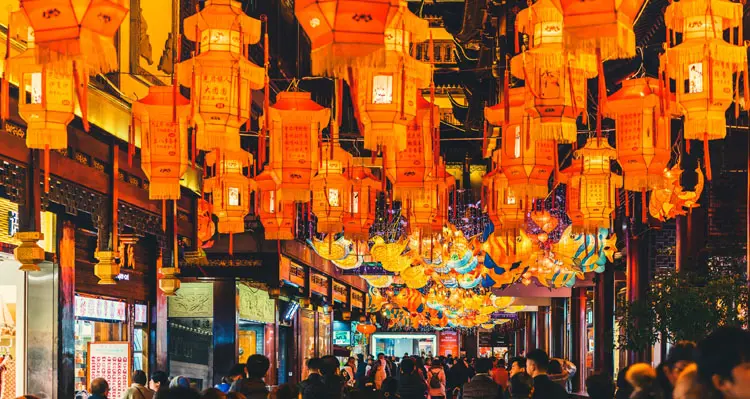 China's Lantern Festival
China's Lantern FestivalThe Origins and Stories of Chinese Lantern Festival
Chinese Lantern Festival can be traced back to 2,000 years ago. There are many origin stories about it. Here are two of the most popular ones:
Origin Story 1: A Buddhist Celebration
Ruling the beginning of the Eastern Han Dynasty (25–220), Emperor Hanmingdi was an advocate of Buddhism. He heard that some monks lit lanterns in their temples to show respect to Buddha on the fifteenth day of the first lunar month.
Therefore, he ordered that all the temples, households, and royal palaces should light lanterns on that evening. This Buddhist custom gradually became a grand festival among the people of China.
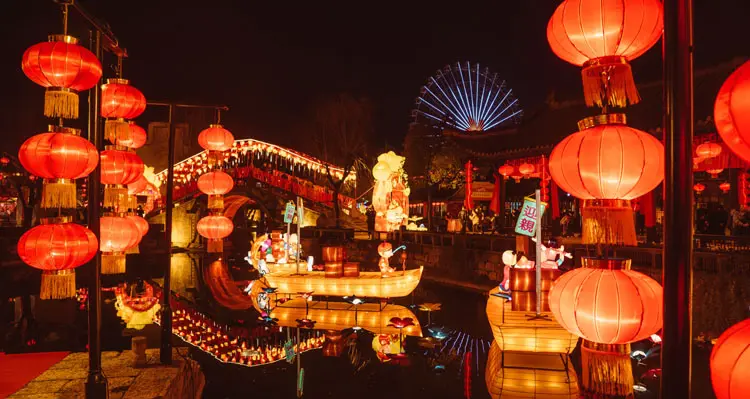
Origin Story 2: A Trick Played on the Jade Emperor
A legend has it that the Jade Emperor's favorite crane was killed by some villagers. So, he decided to destroy the village with fire on the fifteenth day of the lunar year. The Jade Emperor's daughter felt very sad about this and warned the villagers about what was going to happen.
Then, a wise man advised the villagers to hang red lanterns to give the Jade Emperor the impression that the village was already on fire. The emperor was fooled and the village survived. This tradition of hanging red lanterns on the fifteenth day of the lunar year has continued until the present time.
History of Chinese New Year
All good stories change bit over time, as each teller adds a little or changes something. A story that is over 3,500 years old has been told many times and it has taken on a life of its own.
The story of how the most important holiday in Chinese culture began is no different but many of the best bits have remained unchanged. The centuries-old legend of the origins of the Chinese New Year celebration always includes a story of a terrible mythical monster preying on villagers. The lion-like monster’s name was Nian (年), which is also the Chinese word for “year."
The stories often include a wise old man who counsels the villagers to ward off the evil Nian by making loud noises with drums and firecrackers and by hanging red paper cutouts and scrolls on their doors, because Nian is scared of the color red.So the villagers took the old man’s advice and Nian was conquered. On the anniversary of the date, the Chinese recognize the “passing of the Nian,” known in Chinese as guo nian (过年), which is synonymous with celebrating the new year.
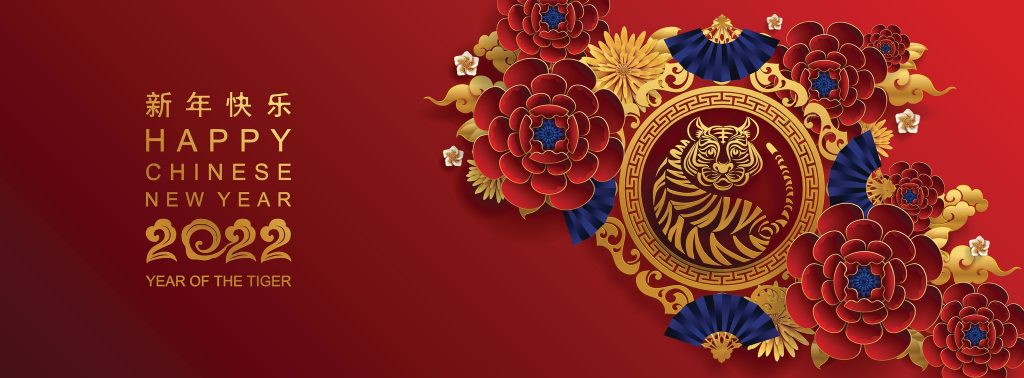 Lunar Calendar
Lunar Calendar
The date of Chinese New Year changes each year because it's based on the lunar calendar. While the western Gregorian calendar is based on the Earth’s orbit around the sun, the date of Chinese New Year is determined according to the moon’s orbit around the Earth. Chinese New Year falls on the second new moon after the winter solstice. Other Asian countries such as Korea, Japan, and Vietnam also celebrate the new year using the lunar calendar.
While Buddhism and Daoism have unique customs during the New Year, Chinese New Year is far older than both religions. As with many agrarian societies, Chinese New Year is rooted in a celebration of spring, like Easter or Passover.
Depending on where it's grown, the rice season in China lasts roughly from May to September (north China), April to October (Yangtze River Valley), or March to November (Southeast China). The New Year was likely the start of preparations for a new growing season.
Traditional Customs
On Chinese New Year, families travel long distances to meet and make merry. Known as the "Spring movement" or Chunyun (春运), a great migration takes place in China during this period as many travelers brave crowds to get to their hometowns.
Though the holiday is actually just a week long, traditionally it's celebrated as a 15-day holiday when firecrackers are lit, drums are heard on the streets, red lanterns glow at night, and red paper cutouts and calligraphy hang on doors. Children are also given red envelopes containing money. Many cities around the world hold New Year parades complete with dragon and lion dances. Celebrations conclude on the 15th day with the Lantern Festival.
Spring cleaning is a common theme during this time. Many Chinese families clean out their homes during the holiday. The New Year celebration could also have been a way to break up the boredom of the long winter months.
Food is an important component of the New Year. Traditional foods to eat include nian gao (sweet sticky rice cake) and savory dumplings.
Chinese New Year vs. Spring Festival
In China, New Year celebrations are synonymous with Spring Festival (春节 or chūn jié), which is typically a week-long celebration. The origins of this renaming from "Chinese New Year" to “Spring Festival” are fascinating and not widely known.
Chinese New Year, also known as the Lunar New Year or the Spring Festival, is the most important among the traditional Chinese festivals. The origin of the Chinese New Year festival can be traced back to about 3,500 years ago.
Chinese New Year has evolved over a long period of time and its customs have undergone a long development process.
Chinese Year Year - Over 3500 Years in the Making
 Chinese New Year's Origin: In the Shang Dynasty
Chinese New Year's Origin: In the Shang Dynasty
Chinese New Year has enjoyed a history of about 3,500 years. Its exact beginning is not recorded. Some people believe that Chinese New Year originated in the Shang Dynasty(1600–1046 BC), when people held sacrificial ceremonies in honor of gods and ancestors at the beginning or the end of each year.
Chinese Calendar "Year" Established: In the Zhou Dynasty
The term Nian ('year') first appeared in the Zhou Dynasty (1046–256 BC). It had become a custom to offer sacrifices to ancestors or gods, and to worship nature in order to bless harvests at the turn of the year.
Chinese New Year Date Was Fixed: In the Han Dynasty
The date of the festival, the first day of the first month in the Chinese lunar calendar, was fixed in the Han Dynasty (202 BC – 220 AD). Certain celebration activities became popular, such as burning bamboo to make a loud cracking sound.
In the Wei and Jin Dynasties
In the Wei and Jin dynasties (220–420), apart from worshiping gods and ancestors, people began to entertain themselves. The customs of a family getting together to clean their house, having a dinner, and staying up late on New Year’s Eve originated among common people.
More Chinese New Year Activities: From the Tang to Qing Dynasties
The prosperity of economies and cultures during the Tang, Song, and Qing dynasties accelerated the development of the Spring Festival. The customs during the festival became similar to those of modern times.
Setting off firecrackers, visiting relatives and friends, and eating dumplings became important parts of the celebration.
More entertaining activities arose, such as watching dragon and lion dances during the Temple Fair and enjoying lantern shows.
The function of the Spring Festival changed from a religious one to entertaining and social ones, more like that of today.
In Modern Times
In 1912, the government decided to abolish Chinese New Year and the lunar calendar, but adopted the Gregorian calendar instead and made January 1 the official start of the new year.
After 1949, Chinese New Year was renamed to the Spring Festival. It was listed as a nationwide public holiday.
Learn Some New Year Greetings
Why not Use this Chinese New Year to learn some Chinese, and get involved.
Its the perfect time to pick up a few phrases and learn some traditional greetings and join in the fun of New Year. We all think its hard to learn a new language, but with a little practice and some friends to help we can have you speaking Chinese in no time. So why not make it your New Year's Resolution to learn a few phrases and say hello to new friends.
https://youtu.be/DW772LsDUzY
Virtual Chinese New Year 2022
Behind the Scenes the CWA Team has been hard at work to ensure the Chinese New Year festivities can go ahead. This year as we do things differently the aim will be to take all the best bits of the traditional celebrations and bring them online. From a state of the art audio visual presentation which will be hosted on zoom to project updates during the festival we will connect Chinese communities across not just Northern Ireland but across the globe.
Our motto for this year is Courage of the Tiger as we have the Year of the Tiger in mind we will be using new technology to build the strength and resilience of not just the organisation, but the entire community. So join us and help us as we take our community online, and bring our culture to everyone. If you have an interest in all things online we would love to hear from you to become a digital volunteer. From our teenage gamers to our silver surfers we have a role for you in the exciting new online platforms we are developing.
We aim to make it fun and free to get involved with all the support and training you need. So Join the CWA Digital Team today.
https://youtu.be/ANGTx7_WyKM


